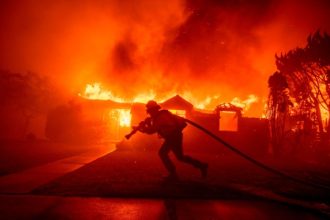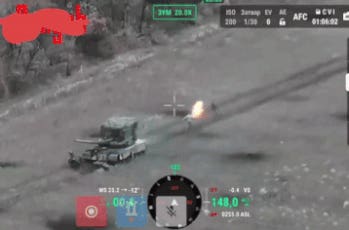On July 24, the Ukrainian 79th Air Assault Brigade, holding the line outside the town of Kurakhivka in eastern Ukraine, repelled one of the biggest Russian attacks of the year—a mass assault by 11 tanks, 45 infantry fighting vehicles, a rare BMP-T tank support vehicle and 12 motorcycles crewed by several hundred soldiers.
Laying mines, launching drones, lobbing artillery and firing anti-tank missiles, the 79th Air Assault Brigade destroyed six tanks, seven fighting vehicles and all 12 bikes. The brigade counted 40 dead Russians and 37 wounded ones.
Three months later, the 79th Air Assault Brigade is still swatting away Russian attacks in the same area. These attacks are much smaller, as the Russians have shifted their main offensive effort 15 miles to the north, aiming to capture the fortress city of Pokrovsk.
But the small victories still matter. Ukrainian forces are stretched thin all along the 700-mile front line of Russia’s 32-month wider war on Ukraine. They’re defending in southern and eastern Ukraine while also trying to hold onto a 300-square-mile salient they’ve carved out of Russia’s Kursk Oblast, just north of the Russia-Ukraine border.
The fragility of Ukrainian lines is evident in the small but meaningful gains the Russians have made in various sectors in recent months. In addition to advancing on Pokrovsk, the Russians have marched into the eastern city of Toretsk and also finally captured the eastern town of Vuhledar after two years of trying. In this context, merely preventing a Russian advance counts as a significant win for the Ukrainians.
The 79th Air Assault Brigade seems to appreciate its victories, however modest. When a solitary Russian tank fitted with anti-drone cage armor and a front-mounted mine-roller approached the Ukrainian paratroopers, apparently on Friday, the paratroopers fired an American-made Javelin anti-tank missile—and then celebrated the grisly results on social media.
The 50-pound, infrared-guided Javelin is one of the best anti-tank missiles in the world. And the missileers from the 79th Air Assault Brigade are some of the world’s most experienced Javelin shooters.
Struck by a Javelin, that lonely Russian tank began burning from the inside. All three crew bailed out, one engulfed in flames. The unburned tankers tried to extinguish the fire consuming their comrade—but then the tank exploded. “Everyone went negative,” one Ukrainian blogger reported. That’s slang for “they died.”
It’s hard, dangerous work getting into position for a clean Javelin shot. Anti-tank teams must lie in wait, patiently track targets as far as 1.5 miles away, fire a missile and then flee—fast. “If, after your first launch, the enemy discovers you, they’ll throw everything at you,” a 79th Air Assault Brigade Javelin shooter named Valeriya explained in February.
The Ukrainian air assault forces assign some of their most aggressive troopers to anti-tank teams. The ones who figure out how to survive can rack up staggering numbers of vehicle kills. A 79th Air Assault Brigade missileer named Gagauz destroyed 40 Russian vehicles in 18 months starting in 2022. Another one of the brigade’s Javelin shooters, Jr. Sgt. Andrii H., hit four vehicles in one skirmish in January.
Taking out just one tank is less impressive. But for the outnumbered, outgunned defenders of eastern Ukraine, even small victories are preferable to the likely alternative: defeat and retreat.
Read the full article here





